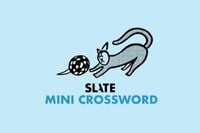For countless puzzle enthusiasts, the daily ritual of solving crossword puzzles has become more than just a pastime—it’s a cherished routine that brings a sense of accomplishment and a dash of fun to the day. On Saturday, September 27, 2025, two prominent sources of quick crossword entertainment, The New York Times and Slate, each released their own versions of the beloved mini crossword, offering players a mental workout and a brief escape from the daily grind.
According to Parade, which covered the New York Times Mini Crossword for September 27, 2025, the excitement around these pint-sized puzzles is palpable. The Mini Crossword, a compact version of the classic NYT crossword, has developed its own dedicated fanbase. Unlike the larger, subscriber-only crossword, The Mini is available to a wider audience and, interestingly, resets at 10 p.m. each evening—giving night owls and early birds alike a fresh challenge before the new day begins. That’s a little earlier than some other games, like Wordle, which reset at midnight.
The September 27 edition of The Mini featured a set of clues that ranged from pop culture nods to geography and mythology. For those who needed a little nudge, Parade provided both hints and full answers, carefully separated to avoid accidental spoilers. The hints included details such as, “1 Across: Wide-ranging — HINT: Ends with the letter ‘D’,” and “6 Across: Country that produces Comte and Camembert — HINT: Ends with the letter ‘E’.” These clues were designed to tease the brain just enough to spark a eureka moment without giving everything away at once.
Of course, for those who found themselves stumped (and who among us hasn’t been there?), the full set of answers was also provided. The Across solutions for September 27 were: BROAD, FRANCE, PLANETS, RAV, WOK, AVATAR, TODAY, and TROY. The Down answers included: BRAVADO, RAN, ONEWAY, ACTOR, DESK, FLAVOR, PRATT, and TAY. Each answer reflected a blend of general knowledge and cultural awareness, with references spanning from “Toyota’s ___ 4” (RAV) to “Chris of ‘Guardians of the Galaxy’” (PRATT), and even a nod to pop star Taylor Swift’s nickname (TAY).
“Working on the daily Connections, Wordle and Strands is a whole ritual for many of us. And we can’t forget about the NYT’s The Mini Crossword, too!” Parade reported, capturing the sense of community and daily anticipation that surrounds these games. The article also reminded readers to be cautious if they wanted to avoid spoilers, as the answers were clearly marked and easy to stumble upon if one wasn’t careful.
Meanwhile, Slate offered its own take on the mini crossword craze with its daily 5x5 grid. The invitation was simple and inviting: “Take a quick break with our daily 5x5 grid.” This straightforward approach underscored the appeal of these puzzles—not as daunting intellectual challenges, but as pleasant diversions that fit neatly into even the busiest of days. The 5x5 format, slightly larger than the NYT Mini’s usual 5x5 or 5x6 grid, provides just enough complexity to keep solvers engaged without demanding a significant time investment.
The rise of mini crosswords is a testament to the enduring popularity of word games in the digital age. While traditional, full-sized crosswords can take upwards of an hour to solve and often require a deep reservoir of trivia knowledge, mini crosswords are designed for accessibility. They can be completed in just a few minutes, making them ideal for a morning coffee break, a midday pause, or a wind-down activity before bed. It’s no wonder that both The New York Times and Slate have invested in these bite-sized puzzles, recognizing the demand for quick, satisfying challenges that fit into modern life.
Beyond their entertainment value, mini crosswords offer cognitive benefits as well. Research has shown that engaging in regular puzzle-solving can help improve vocabulary, sharpen memory, and enhance problem-solving skills. For many players, the sense of achievement that comes from filling in that last square is a small but meaningful boost to the day’s morale. As Parade playfully noted, “If you’re anything like me, the day is not complete until I finish all of the free word games from the New York Times.”
The cultural references embedded in the September 27 Mini Crossword also reflect the puzzles’ ability to connect solvers with the world around them. Answers like AVATAR (the highest-grossing film of all time), FRANCE (home to world-famous cheeses like Comte and Camembert), and TROY (the mythic city linked to Helen of Troy) draw on a shared pool of knowledge, making each puzzle a miniature tour through history, geography, and pop culture. Even the clue referencing Oasis’s “Wonderwall” (“First word of Oasis’s ‘Wonderwall’ — TODAY”) taps into the collective memory of a generation.
It’s not just about the answers, though. The process of deduction—piecing together hints, testing possibilities, and sometimes making wild guesses—mirrors the way we tackle bigger problems in life. Crossword solvers know the thrill of seeing a word fall into place after minutes of head-scratching, and the satisfaction of spotting a clever clue that ties everything together. These moments, repeated day after day, help foster a sense of resilience and curiosity.
As the popularity of mini crosswords continues to grow, it’s likely that more variations and creative twists will emerge. Already, there are dozens of similar games inspired by the NYT Mini and Slate’s 5x5 grid, each offering its own flavor of challenge and delight. For now, though, the daily crossword remains a beloved touchstone—a small but steady source of joy in an unpredictable world.
Whether you’re an experienced puzzler racing against the clock or a casual player savoring each clue, the mini crossword offers a moment of calm, a spark of inspiration, and a gentle reminder that sometimes, the best things really do come in small packages.




